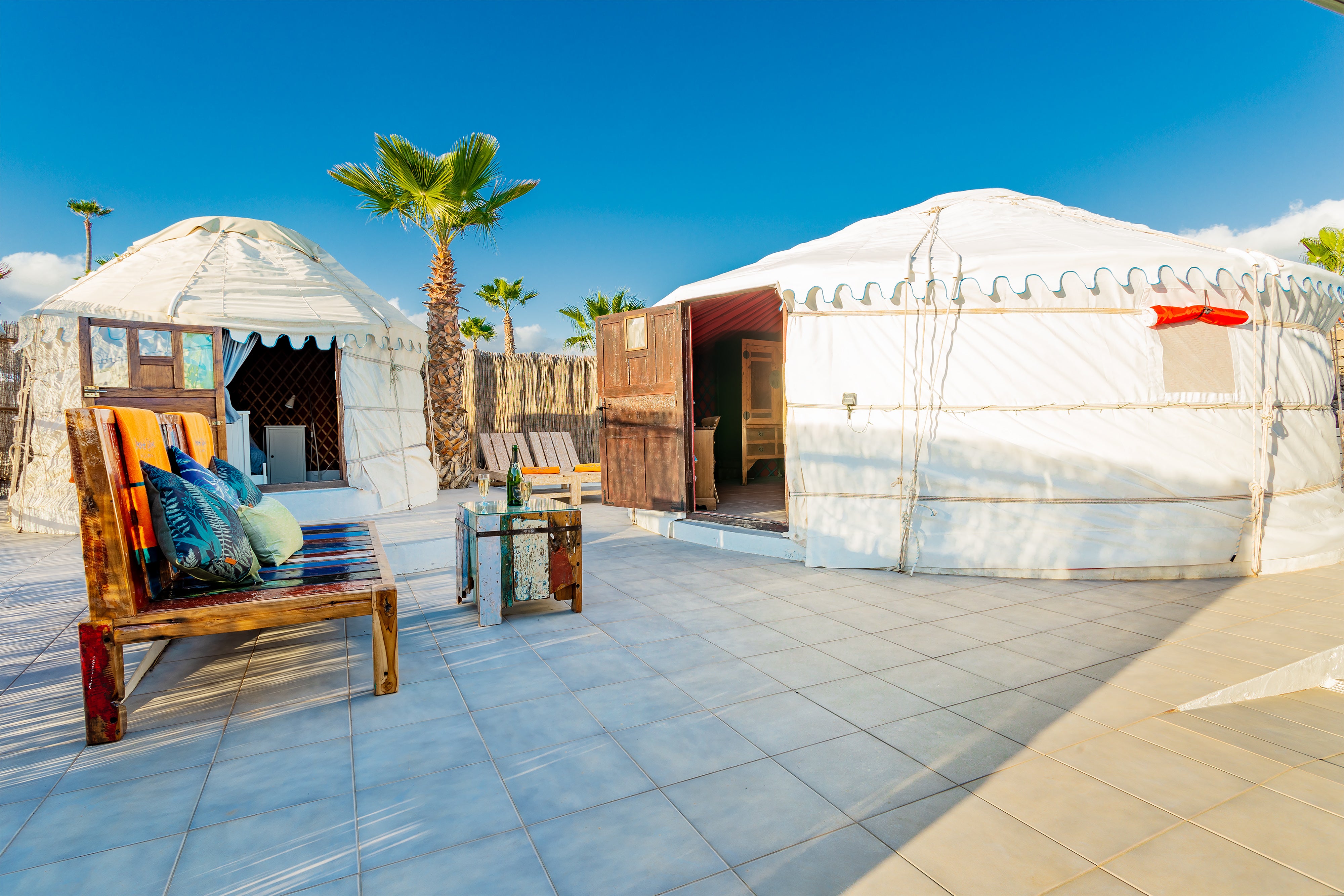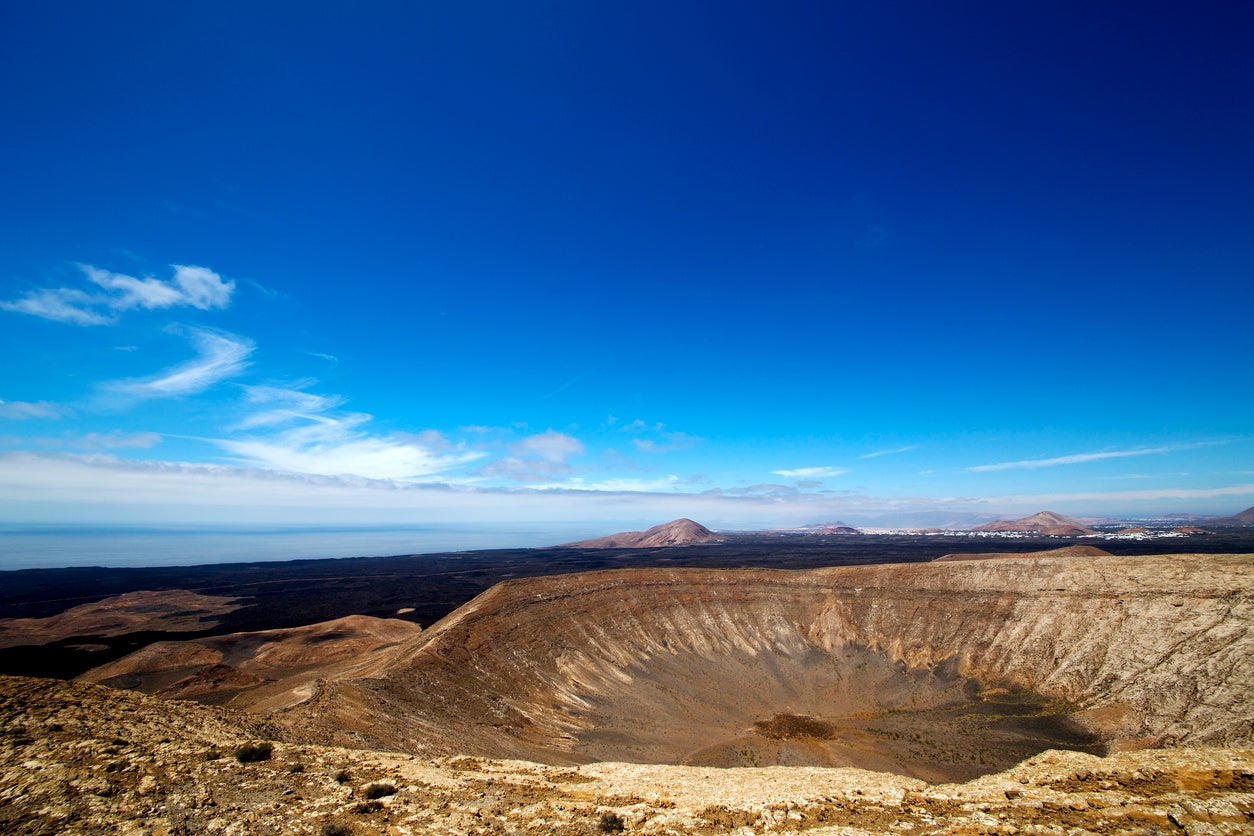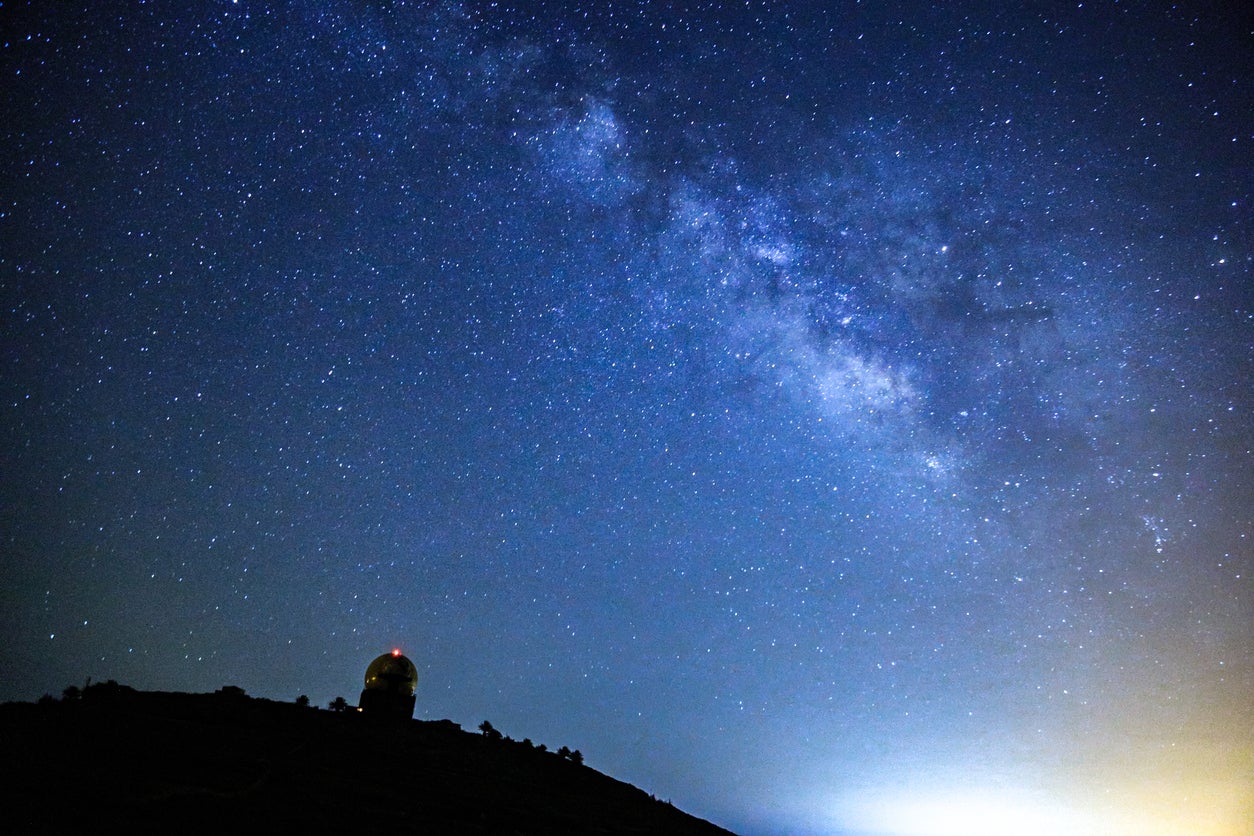Starry, starry night: Why Lanzarote is a star-gazer’s paradise
This volcanic island offers a sustainable spin and clear skies ready for constellation spotting, finds Matt Charlton

It’s half past five in the morning, and I take myself outside my “surf shack” to feel, smugly, the November warmth. Looking up, I see a star flooded sky – the Big Dipper, Orion’s Belt and Polaris, there as plain as… well, night. And thank goodness: this is, after all, what I’ve come here for.
Lanzarote is spearheading the eco-drive here in the Canaries. It’s easy to bandy around a word like “sustainability” in this day and age; but, while I’m here, I meet people who are living proof of this philosophy. A clear night sky is a promising start.
I am in the far north of the island, on the edge of the town of Arrieta – well away from the main town of Arrecife, half an hour down the road – and far enough away from any significant source light pollution (or about as far away as anyone can be on an island of this size).

The place I’m staying is a beautiful eco resort called Finca de Arrieta, a small settlement nestling in the rocky black hills on the edge of the picturesque town from which it takes its name. There is a “life size” wooden carving of a centaur at the resort entrance, bearing a sign stating that it’s there to “symbolise the unity of the staff and guests… and their joint mission to live the eco dream”.
Made up of various abodes in varying guises – high-end yurts, towers fashioned from local stone, lodges and barns with private gardens – the resort encourages guests to collect their shower water and pour it on the native cacti scattered along the winding pathways, and to make use of the complementary hybrid cars. Every building is off-grid, and resident cat, Zack, is undoubtedly the real owner.
My stargazing tour is a few days away, so I have some time to fill. Luckily, I have a hybrid car and an entire Canary Island at my disposal, plus complimentary surf boards – the beach is a handy seven-minute walk away. I spend an unsuccessful morning sitting as far beyond the waves as I dare trying to find a decent “swell”, but it never arrives. Apparently the surf is better over at Orzola Beach, so I make a mental note, although there is no way I can fit the surfboard into the car. Instead, I swim in the warm, clear Atlantic – setting myself the target of a diving platform 200 metres away on a jetty. It seems much higher when I get up close.
Jose is incredibly passionate about the conservation side of this island, pointing out, on the sides of the craters, footprints that won’t disappear for years to come
The following day I drive towards the centre of the island, and the edge of Los Volcanes Natural Park, where Jose – perhaps one of the most knowledgeable guides I’ve ever met – walks my group around the craters and lava rocks that have entire 18th-century villages (when the volcanos didn’t relent for almost six years) buried beneath them. Jose is incredibly passionate about the conservation side of this island, pointing out, on the sides of the craters, footprints that won’t disappear for years to come, left by tourists hungry for the perfect Insta shot. He implores us to stick to the path in the interests of Lanzarote’s delicate and beautiful ecosystem.
The four-hour walk, along jagged loose lava rock and rust-coloured craters, gives me a new respect for the geography of this island away from the gift shops and full English breakfasts with a free pint, all found just a few miles away. Lanzarote prides itself on being the most sustainable Canary Island, but it is people such as Jose, and the Finca owners, who are the real work-horses behind the claim.

Jose expressed doubts about the likelihood of a clear night sky for stargazing – the clouds usually gather in the early evening and burn off in the midday heat, and there’s also quite a bright moon during my visit. Yet still – with the optimism of a Brit bringing a deckchair to Blackpool beach – I meet my guide, Elina, as the sun begins to go down the following evening. As advised, I have come prepared with warm clothes and a stargazing app, and, despite having convinced myself that I would be oblivious to a slight drop in temperature, I start to layer up as the disappearing sun turns the volcanic landscape burnt orange and we take in our 360-degree view of the island. After sunset, we walk down into the volcanic crater for more darkness, and my group settles into sheltered spots, lies on blankets, and points our eyes and smartphones up towards the darkening sky.
The rugged volcanic horizon butting up against a clear night sky allows a tranquil atmosphere to descend
Elina – a Latvian, now living in Lanzarote, who at one point in the evening does a fairly convincing Brummie accent for me – explains what we should be expecting to see, including constellations, belts, white dwarfs and nebulas, and exactly where Earth sits in the Milky Way (Douglas Adams had informed me that it sits at the unfashionable end of the western spiral arm of the galaxy and, to be honest, he wasn’t far off). Despite a bright moon, Venus makes an early appearance and, slowly but surely, I am able (with a little help from the app) to pick out the Square of Pegasus, Andromeda, and even my own star sign, Scorpio. The rugged volcanic horizon butting up against a clear night sky allows a tranquil atmosphere to descend, and I feel far removed from everything happening on the Earth’s surface.

Driving back to my resort, the street lighting diminishes as I progress north. The darkness allows me to pick out, with my newly acquired knowledge, some of the sights of the sky in the winter. With all the promises Lanzarote is making about its sustainability credentials, hopefully the night skies will soon twinkle all the brighter.
Travel essentials
Getting there
Trying to fly less?
Take a Eurostar from London to Paris and change for a train to Barcelona. The following day you can catch a train to Cadiz with a change in Seville. It’s then possible to get a ferry to Lanzarote from the port of Cadiz.
Fine with flying?
TUI offers seven night flight only deals to Lanzarote departing from London Gatwick from 10 January 2022 from £79 per person, based on two adults.
Staying there
Yurt accommodation at Lanzarote Retreats’ eco village Finca de Arrieta costs from €100 (£85) per night (sleeping three). Seven nights’ self-catering in a yurt (sleeping a couple or small family) costs from £885 in January, excluding flights. The friendly local team can also arrange private airport transfers and exclusive use of a Toyota hybrid car throughout your stay. lanzaroteretreats.com
More information
Visit hellocanaryislands.com and lanzaroteretreats.com for more info.






Join our commenting forum
Join thought-provoking conversations, follow other Independent readers and see their replies
Comments